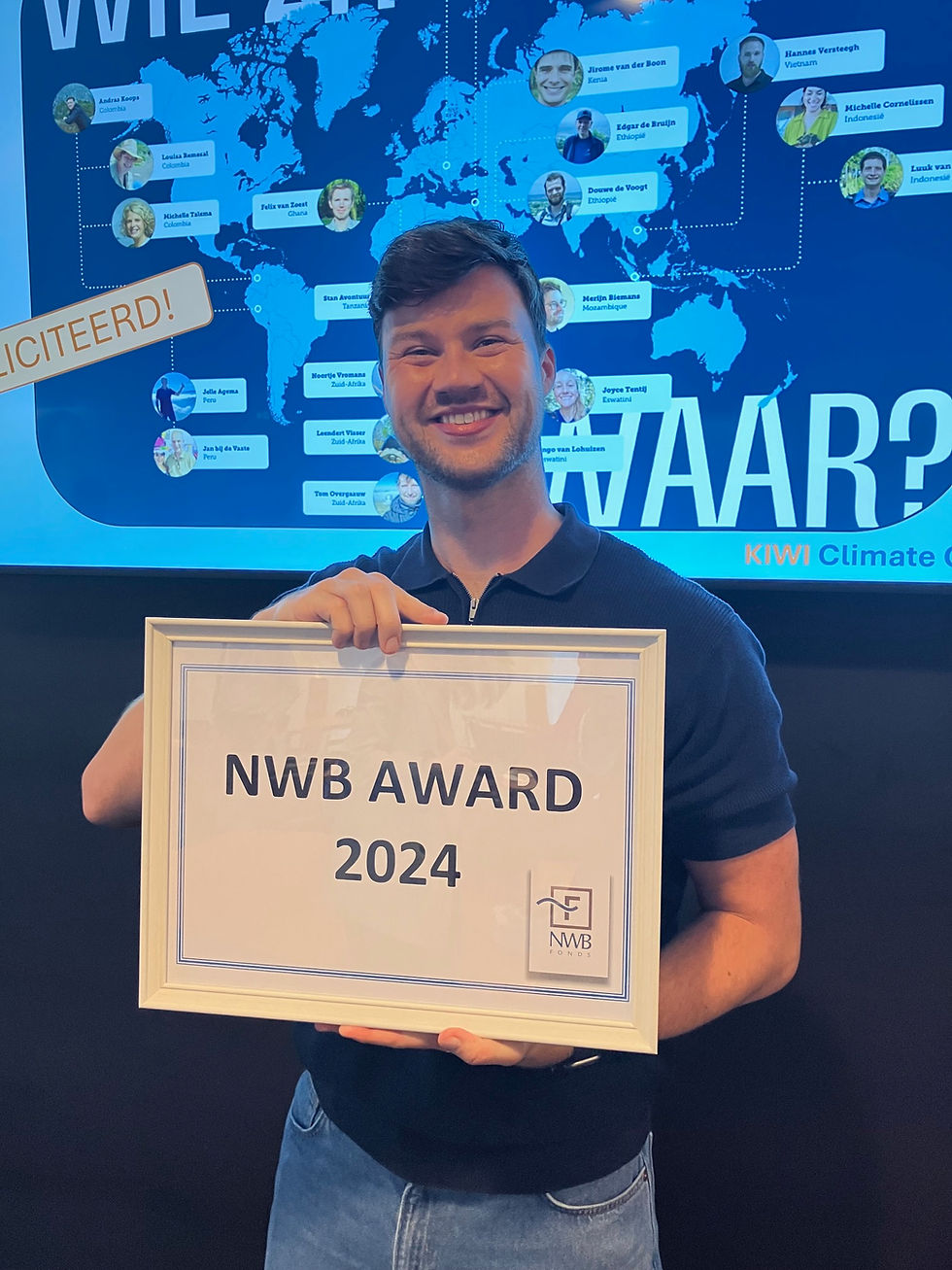Solar Energy for Pumps in Pekalongan, Indonesia
- mwierda6
- Oct 4, 2024
- 2 min read
Updated: Apr 8

Through the KIWI program, opportunities for climate adaptation have been mapped in various countries within Blue Deal partnerships, including Indonesia. KIWI participant Luuk van Elk conducted a regional scan in and around the city of Pekalongan. The area has large pumps, as it is situated in a low-lying region where the ground is sinking, and sea levels are rising due to climate change. As a result, heavy pumping is needed to keep the area dry. However, the pumps are powered by coal or diesel, leading to increased greenhouse gas emissions and high costs. Over the next year, research will be conducted to explore solar panels as a sustainable alternative.
Photo: Pumping Station in Pekalongan
The KIWI program 2022-2024 aims to identify and stimulate climate adaptation opportunities within Blue Deal partnerships. This includes the Blue Deal Indonesia partnership with the city of Pekalongan, located on the northern coast of Java Island in Indonesia.
Pekalongan is threatened by a combination of land subsidence (up to 17 cm per year) and rising sea levels, leading to more frequent and severe flooding from the sea. If no measures are taken, there is a risk that in 10 years, half of the city will be below sea level. Additionally, the rainy season is becoming shorter and more intense, resulting in increasingly frequent flash floods from upstream areas. The drainage system is becoming an increasingly important factor in keeping the city livable. Pumps play a critical role here, as water can no longer flow freely to the sea due to rising sea levels and land subsidence.
Photo: Flooding in Pekalongan
Currently, however, these pumps are powered by electricity from coal plants or diesel generators. As the pumps are used more frequently and for longer durations, both the costs and CO2 emissions continue to rise. Indonesia’s goal is to reduce greenhouse gas emissions by 70% by 2030. Therefore, together with local government organizations Kota and Kabupaten and the University of Semarang UNDIP, a feasibility study is being conducted to explore the use of solar energy for the pumps.
Luuk van Elk: "Together with Kota and Kabupaten, we have formulated the initial research questions, which we will try to answer with the university. This first feasibility study aims to assess how many solar panels are needed for the pumps, where we can place them, what the management and maintenance costs will be, and whether it will ultimately be more cost-effective than using electricity from coal plants or diesel generators."
The feasibility study will take approximately one year to complete and is expected to be finalized with a research report and recommendations for next steps by the third quarter of 2025.





